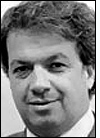Item-level RFID systems specialist Tagsys has raised $35 million in a round of financing it says will help increase its tag-manufacturing capacity. The funding will also serve to extend its offerings into the luggage-tracking and postal and courier markets.
The formerly French company, now headquartered in Cambridge, Mass., raised the funding from JPMorgan Partners, Cazenove Private Equity and previous investors Elliott Associates, L.P. and Endeavour Venture Capital. The new investment brings Tagsys’ total financing to more than $78 million. In August 2005, the company announced it had completed a $12.2 million round of funding from Endeavour, based in Geneva, Switzerland, and from New York-based hedge fund Elliott Associates and its affiliates (see New Funding for Tagsys).
In September 2004, the company reported receiving $9 million in a third round of funding from Add Partners, AXA Private Equity, Endeavour, Saffron Hill Ventures and Joint Investment Fund for Young Enterprises (FCJE), all of which had previously invested in Tagsys (see Tagsys Receives $9 Million in Funding).
Privately held Tagsys says it is seeing increased interest and sales of its equipment in item-level tagging in library, pharmaceutical and luxury-goods applications. The company reportedly plans to expand its product design and sales efforts to include tags and interrogators for luggage-tracking, as well as for courier and postal item-level tagging applications. Tagsys has built its business around passive high-frequency (13.56 MHz) item-level RFID tagging systems, with offerings geared toward a number of specific markets, including textile rental, libraries and pharma. Currently, around 90 percent of Tagsys’ revenues are derived from HF systems sales, but because of growing interest in UHF item-level tagging, the company expects HF tags to account for only 65 percent of its revenues by the end of next year, according to Elie Simon, Tagsys’ CEO.
The company sells a range of RFID equipment for the library market, such as tags for books and media, RFID-enabled library cards, and wand, desk and gate RFID readers. The library market makes up the bulk of the firm’s current sales, and the company believes there is significant potential in that market. “The size of the worldwide library market is around 5 billion books,” Simon says. “Around 50 percent of these books are replaced every year, and RFID has penetrated only 0.4 percent of the market.”
Other markets, however, are adopting RFID more quickly. By the end of the year, Tagsys predicts, its sales to pharmaceutical firms will exceed those to libraries for the first time. The firm offers a range of passive HF tags, as well as fixed and tunnel readers, for the pharmaceutical market.
Tagsys is supplying its tags to Pfizer for a trial tagging every bulk container of Viagra sold in the United States (see Pfizer Using RFID to Fight Fake Viagra). The application uses Tagsys’ Flexible Module passive HF (13.56 MHz) tag. The company is convinced, however, that as RFID applications increasingly move to item-level tagging, there will be applications for both HF and UHF tags, with the frequency used being determined by the requirements of the application and the suitability of the RFID system used.
“Both frequencies will be used, but in a ‘fit for purpose’ way. For example, in item-level apparel tagging, UHF will work well in the store and at the POS,” says Simon, “but in the supermarket, with a less RF-friendly environment, when it comes to using RFID to guarantee payments, UHF doesn’t work but HF will.”
Tagsys is in the process of building a new manufacturing plant in Chennai, India, for both HF and UHF equipment. Set to start operating by October 1, the plant will have an annual manufacturing capacity of 130 million tags.


